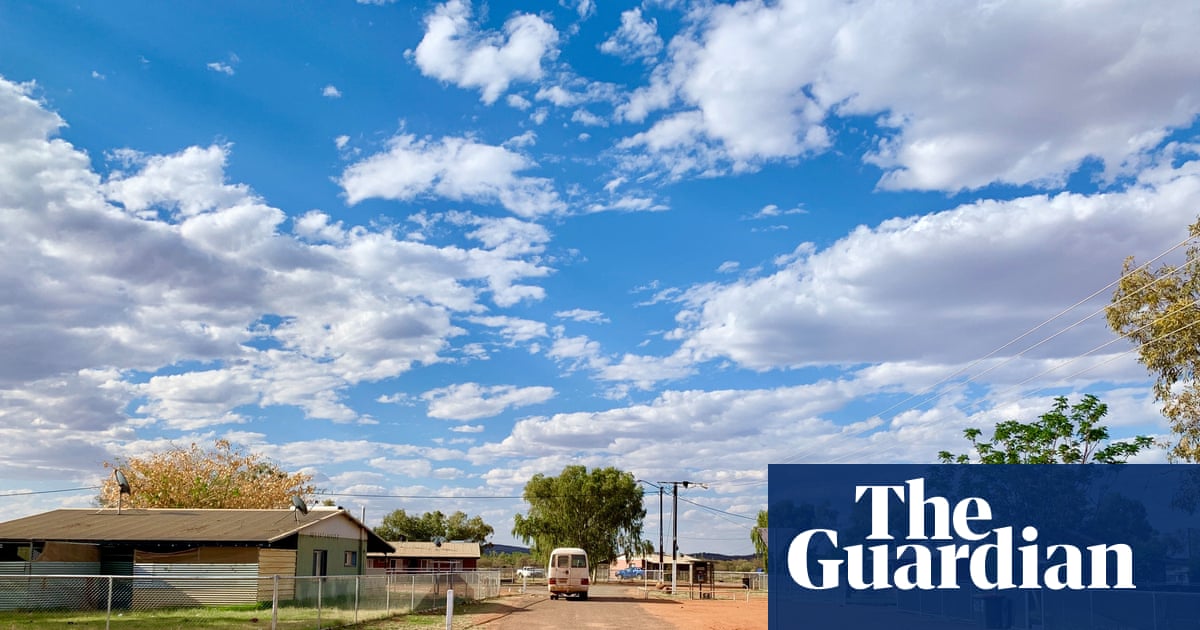Journey into the Wilderness
I thought my car was big until I turned onto Fog Bay Road. I'm two hours south of Darwin in Australia's Northern Territory and this left turn has taken me into the wilderness of the Top End.
Suddenly everyone's driving a monster 4×4. The tyres have knobs on and there are cages in the truckbeds from which huge dogs eyeball me. They tow boats on trailers, carry sand plates, have winches on the front and jerry cans strapped to the roof. I can't tell if they're tourists in search of extreme adventure or just Top End residents popping to the shops.
I'm heading to the Finniss River Lodge. The further I travel, the more primitive it gets. For the saltwater crocodiles living in the tidal creeks, the land is much the same as it was for their ancestors, 200 million years ago: a sun-scorched, flood-drenched land where the red soil has been leached of nutrients for a quarter of a billion years and is mostly good for nothing but eucalyptus, sorghum and kangaroo grass.
What kind of madmen, desperados and dreamers, I'm wondering, would choose to live in a barren land full of dinosaurs where the two seasons are burning and drowning?
Essential Information
How to get there Fly to Darwin and it's a two-hour drive south
What does it cost? One night's all-inclusive from £700pp
Who will love it? The crocodile-curious and foodie adventurers
Lodge Suites with Views of the Floodplain
Leo Venturin was one of the dreamers, an immigrant Italian builder who always fancied himself as a rancher. He is now 89, and his 50,000-acre cattle station is home to the Finniss River Lodge, offering all-inclusive luxury in a place where luxury usually counts as a patch of shade and a cold beer.

Finniss River Lodge has six en suite rooms
The lodge lies on the shore of a seasonal floodplain that drains into the Timor Sea 13 miles west. Clad in corrugated iron, it looks like a cattle shed, but with air-con, a pool and termite-proof hardwood floors. The six en suite rooms are as comfortable as you'll need but it's clear that the views over the floodplain are considered the most important feature.
At the right-hand end are a library, bar and restaurant but, once again, it's nature that's the star attraction. That the lodge manager, Chase Johnson, is also the Northern Territory's leading crocodile guide tells you pretty much all you need to know about this extraordinary spot. That her colleague Brad packs a Colt .45 on his hip suggests it's unlikely you'll find a pillow concierge and a signature fragrance at this particular five star.
"I only use it on feral pigs," he says of the automatic, explaining how the invasive swine threaten the habitats of 149 native species, spread leptospirosis to cattle and, by getting eaten, have helped drive the explosion in saltwater crocodile numbers from a few thousand in the 1980s to more than 100,000 today.
I want to see crocs but they want me to see cows, and that's how I come to be standing in a paddock with a bottle of South Australian sparkling wine and an Esky full of canapés surrounded by flies and a few dozen of the station's 5,000 tropically adapted Brahman cattle. I didn't realise, but it was a test.

Chris Haslam meets a herd of tropically adapted cows
"We like to bring guests down to see the cows on their first afternoon," Chase says, elbowing a three-quarter-ton bull aside. "It gives us an idea of how they react around wildlife."
Raising cows in the tropics is agricultural masochism. The risk of bovine pestivirus, buffalo fly, blackleg disease, screwworm fly, tail rot, three-day sickness and a stack of other threats means the herd needs constant surveillance, and even a wire scratch or a fly bite is enough to see a cow rejected by the Asian markets in which they are sold.
Are the crocs a danger to the cows? "Yeah, we lose a lot," Brad says. "Where there's livestock there's dead stock."
Guests eat as well as the crocs here, with tiger prawn ceviche with pickled jalapeño, coconut and macadamia cream on that night's menu, followed by Cape Grim beef rib fillet with romesco and paperbark potatoes.

The six en suite rooms are comfortable and offer fantastic views
Breakfast Served Between Termite Mounds
The next morning, an hour before dawn, we drive into a high-rise megacity with millions of inhabitants — their homes are like the fairy towers of Cappadoccia, or the temples of Bagan. They're magnetic termite mounds: 13ft slabs of baked earth orientated north-south to regulate the temperature. Look up the fascinating science of Amitermanis meridionalis before you go, though, so you can fully appreciate the surreal experience of eating a cooked breakfast between the towers as the sun rises above the mist.
Then we head to the beach. It's in a village called Dundee, which was obviously the inspiration for Crocodile Dundee.
"Nope," Chase says. "We named the place after the film." It's a pretty spot, with a boat ramp, a campsite, a pub and a long curve of palm-shaded sands with warm turquoise water that absolutely no one will even paddle in.

Don't paddle at Dundee beach unless you want to risk meeting a crocodile
Looking for Crocs
"There's a sure-fire way to check for crocs up here," Chase says. "You go up to the water, touch it and if it's wet there's a crocodile in it." Are there sharks too?
"Nah," Brad says. "Crocs ate all the sharks."
Last month, he says, a tourist had dashed into the pub to report a 15ft crocodile waiting by the petrol pump. "Tell him it's self-service," the barman said.
We don't see any crocs but we will this afternoon, Chase says. As we board the airboat after lunch I take a moment to assess my situation. Brad's got his .45, Chase has her bush hat and her cattle dog, and there's an Esky full of beer strapped to the deck. With wallabies in the paddock, black cockatoos overhead and mangroves full of crocodiles ahead, it strikes me that I may never see a better snapshot of life in the Top End.

Exploring on an airboat in the Northern Territory with guides from Finniss River Lodge
The floodplain feels primordial. It's exactly the kind of "warm shallow pond" identified by Darwin as the petri dish for the origin of life. At least a dozen species of dragonfly buzz back and forth like neon helicopters. Rainbow bee-eaters, lemon-bellied flyrobins, rose-collared doves and blue-winged kookaburras gave them a run for their money. There's a monitor lizard monitoring the bank and huge tarpon are breaking the surface to gulp air like they're thinking of making the move to dry land.
"Can you see the croc?" Chase asks. For a few moments I can't but then I see a yellow eye, the tip of a snout and a hint of a smile, just four feet away. Now I understand why there's steel safety fencing on the boat. "She's guarding her nest," Chase says. "We had a big thunderstorm two weeks ago and it's the lightning that triggers the girls to lay." She's still talking when the croc bursts from the water to lie upon her eggs.

The lodge's guides can help you get an up-close look at the crocodiles
The speed and the power are terrifying, and while you might think you could cover the same distance quicker, you probably can't — especially if it's taken you 20 seconds to spot an animal that's just a couple of arm's lengths away.
Meanwhile, Chase is talking to the 8ft croc in the same way a horse whisperer might speak to a spooked filly.
"She's still a small one," she says. "The girls stop growing at 10ft. The boys don't." The biggest-known male weighed nearly a ton and was 17ft long. His name was Sweetheart, his carcass is on display in Darwin's Museum and Art Gallery of the Northern Territory (MAGNT) and he was caught in Sweets Lagoon, three miles upstream from here.
That's a sobering thought, I say, glancing around the mangrove.
Chase opens the Esky. "Better have a beer, then."
Mini-Guide to the Northern Territory
Wildlife

Besides the local cattle there's plenty of fascinating wildlife to see during the 12-night tour
The kaleidoscopic birdlife of the Northern Territory makes even the most seasoned British birder feel like a seven-year-old with a new pair of binos. The dazzling colours of species such as the gouldian finch, the rainbow pitta and azure kingfisher have evolved, ornithologists say, due to the colour-forming carotenoids in their diet and are used to communicate within their shady tropical habitat. But this 12-night group wildlife tour of the Top End offers more than birds. Other species include Antilopine wallaroos, possums, flying foxes, dingos and crocodiles, but it's the birdlife — and especially that of the Kakadu National Park — that will make you weak at the knees.
Details Thirteen nights' full board from £7,995pp, including flights, departing September 16, 2026 (naturetrek.co.uk)
Culture
The capital, Darwin, is named after an English naturalist and the 39,000 square mile wilderness of Arnhem Land to the east is named after a Dutch ship, but now those who were here first are pushing back. The £30 million Larrakia Cultural Centre is under construction on Darwin Harbour, and curators worldwide, including those at Bristol Museum, are returning items taken from the Northern Territory's original inhabitants ahead of next September's opening. If you want to learn more about the world's oldest living culture, join an eight-day private tour of Arnhem Land and the Kakadu National Park. Guided by Davidson's Arnhemland Safaris, which works alongside the Amurdak people, you travel through the Kakadu National Park and across the East Alligator River into the Mikinj Valley, visiting aboriginal communities, hearing their stories and seeing their ancient rock paintings. Back in Darwin, you'll find entire buildings covered in astonishing 21st-century street art that continues a tradition dating back a staggering 50,000 years.
Details Seven nights' full board from £5,495pp (steppestravel.com). Fly to Darwin

The termite mounds of the Northern Territory
Swims
It's unfortunate that this appears alongside a piece about crocodiles but be assured that many bodies of NT water are not infested with salties. In the Litchfield National Park, the West McDonnell Ranges, around Katherine and in the fabulous Kakadu National Park, you'll find shaded pools of cool, clear water, fed by waterfalls and surrounded by woodland where wild budgies roost. Indeed, the most sublimely chilled two hours of my recent visit was spent wallowing in a natural whirlpool bath beneath a rapid on the Florence Creek at Litchfield's Buley Rockhole — and such is the wealth of truly wild swimming experiences that Tourism Australia has developed an eight-day, waterhole-hopping road trip linking the best spots (australia.com). Guaranteed croc safe and no Dryrobe required.
Details Sixteen nights' self-catering camper-van trip from £2,249pp, including flights (trailfinders.com)
Cruise
The Nitmiluk Gorge outside Katherine, three hours south of Darwin, is a wonder of the world. Not one but 13 gorges, this labyrinth of water and red-coloured sandstone has been home to the Jawoyn nation for 45,000 years. You'll see their art, along with freshwater crocodiles, water monitors and turtles, as you cruise upstream on day six of a ten-day Singapore, Darwin and the Ghan Expedition trip that starts with two nights in Singapore then three in Darwin before boarding luxury train the Ghan for three nights and then arriving in Adelaide.
Details Nine nights' B&B, including three nights' all-inclusive on the train, from £3,999pp, including flights (travelbag.co.uk)




Comments
Join Our Community
Sign up to share your thoughts, engage with others, and become part of our growing community.
No comments yet
Be the first to share your thoughts and start the conversation!